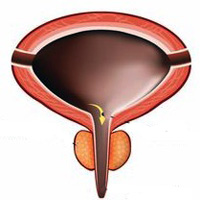In women with incontinence, the need for pressure-flow study before surgery and abnormalities in the voiding phase. An up-to-date comment on the available problem accompanied by literature

Accepted: June 14, 2021
All claims expressed in this article are solely those of the authors and do not necessarily represent those of their affiliated organizations, or those of the publisher, the editors and the reviewers. Any product that may be evaluated in this article or claim that may be made by its manufacturer is not guaranteed or endorsed by the publisher.
Objective: To investigate the differences between urodynamic findings and history in women with urinary incontinence before surgery and clarify the need for preoperative pressure-flow studies.
Materials and methods: The medical records of 1018 women who underwent urodynamic examination for urinary incontinence between 2010 and 2015 were evaluated retrospectively. Stress (n = 442), urge (n = 334) and mixed (n = 242) were classified as type urinary incontinence according to urodynamics. The voiding phase findings of the patients were examined.
Results: The mean age of the patients was 47.85 ± 0.27 years. 18.4% of patients (n = 187) had voiding phase problems. Furthermore, this condition was seen in the most urge incontinence type urinary incontinence (35%). There was a statistically significant difference between the groups' voiding phase findings (p < 0.0001). The relationship between the patient's history and international consultation on incontinence questionnaire form scoring (ICIQ) and the urodynamics results showed no excellent correlation.
Conclusions: Voiding phase abnormalities are not uncommon in patients with urinary incontinence. They should be considered in the evaluation of patients. Voiding phase findings may show significant differences between urodynamic data and history. Besides, the data obtained with the questionnaire forms were significantly different from the findings obtained by urodynamics. Consequently, urodynamics may change pre-operative clinical decision.
Minassian VA, Stewart WF, Wood GC. Urinary incontinence in women: variation in prevalence estimates and risk factors. Obstet Gynecol. 2008; 111:324-331. DOI: https://doi.org/10.1097/01.AOG.0000267220.48987.17
Tennstedt SL, Link CL, Steers WD, McKinlay JB. Prevalence of and risk factors for urine leakage in a racially and ethnically diverse population of adults: the Boston Area Community Health (BACH) Survey. Am J Epidemiol. 2008; 167:390-399. DOI: https://doi.org/10.1093/aje/kwm356
Fletcher SG, Lemack GE. Clarifying the role of urodynamics in the preoperative evaluation of stress urinary incontinence. Scientific World Journal. 2008; 25:1259-1268. DOI: https://doi.org/10.1100/tsw.2008.159
Glazener CM, Lapitan MC. Urodynamic studies for management of urinary incontinence in children and adults. Cochrane Database Syst Rev. 2012; 18: CD003195. DOI: https://doi.org/10.1002/14651858.CD003195.pub2
Urinary Incontinence: The management of urinary incontinence in women. NICE Clinical Guideline 40. London, United Kingdom: National Institute for Health and Clinical Excellence, 2006.
Burkhard FC, Bosch JLHR, Cruz F, et al. EAU urinary incontinence guidelines 2018 ISBN 978-94-92671-07-3.
Yenilmez A, Turgut M, Dönmez T, Özyürek Y. Idrar kaçıran kadın hastalarda basınç-akım çalısmasının (BAÇ) Önemi. Turk J Urol. 2004; 30:451-456.
Onyishi SE, Twiss CO. Pressure flow studies in men and women. Urol Clin North Am. 2014; 41:453-67. DOI: https://doi.org/10.1016/j.ucl.2014.04.007
Groutz A, Blaivas JG, Chaikin DC. Bladder outlet obstruction in women: Definition and characteristics. Neurourol Urodyn 2000;19:213-220. DOI: https://doi.org/10.1002/(SICI)1520-6777(2000)19:3<213::AID-NAU2>3.0.CO;2-U
Groutz A, Gordon D, Lessing JB, Wolman I, Jaffa A, David MP. Prevalence and characteristics of voiding difficulties in women: Are subjective symptoms substantiated by objective urodynamic data? Urology. 1999; 54: 268-272. DOI: https://doi.org/10.1016/S0090-4295(99)00097-7
Carlson KV, Fiske J, Nitti VW. Value of routine evaluation of the avoiding phase when performing urodynamic testing in women with lower urinary tract symptoms. J Urol. 2000; 164:1614-1618. DOI: https://doi.org/10.1016/S0022-5347(05)67041-3
Nitti VW, Tu LM, Gitlin J. Diagnosing bladder outlet obstruction in women. J Urol. 1999; 161:1535-1540 DOI: https://doi.org/10.1016/S0022-5347(05)68947-1
Sirls LT, Richter HE, Litman HJ, et al. The effect of urodynamic testing on clinical diagnosis, treatment plan and outcomes in womenundergoing stress urinary incontinence surgery. J Urol. 2013; 189:204-209. DOI: https://doi.org/10.1016/j.juro.2012.09.050
Adelowo A, Dessie S, Rosenblatt L. The role of preoperative urodynamics in urogynecologic procedures. J Minim Invasive Gynecol.2014; 21:217-222. DOI: https://doi.org/10.1016/j.jmig.2013.10.002
Serati M, Cattoni E, Siesto G, et al. Urodynamic evaluation: can it prevent the need for surgical intervention in women with apparent pure stress urinary incontinence? BJU Int. 2013; 112:344-350. DOI: https://doi.org/10.1111/bju.12007
Rachaneni S, Latthe P. Does preoperative urodynamics improve outcomes for women undergoing surgery for stress urinary incontinence? A systematic review and meta-analysis. BJOG. 2015; 122:8-16. DOI: https://doi.org/10.1111/1471-0528.12954
van Leijsen SAL, Hoogstad-van Evert JS, J Mol BW, et al. The correlation between clinical and urodynamic diagnosis in classifying the type of urinary incontinence in women. A systematic review of the literature. Neurourol Urodyn. 2011; 30:495-502. DOI: https://doi.org/10.1002/nau.21047
PAGEPress has chosen to apply the Creative Commons Attribution NonCommercial 4.0 International License (CC BY-NC 4.0) to all manuscripts to be published.


 https://doi.org/10.4081/aiua.2021.4.441
https://doi.org/10.4081/aiua.2021.4.441



